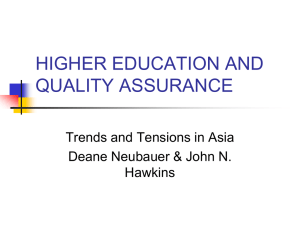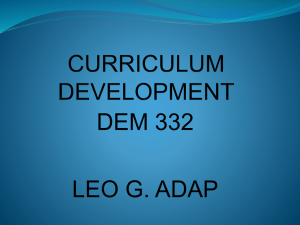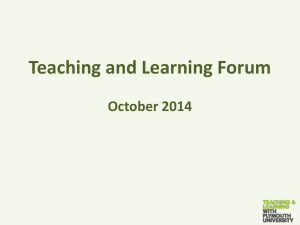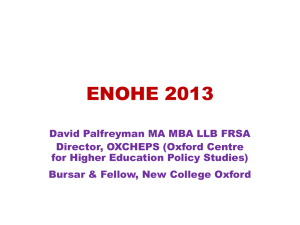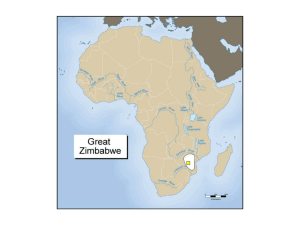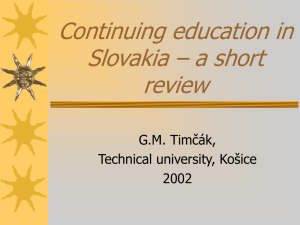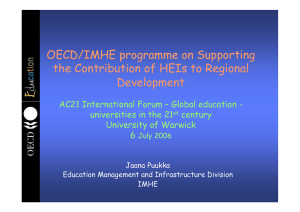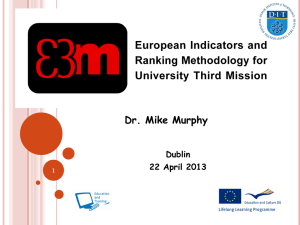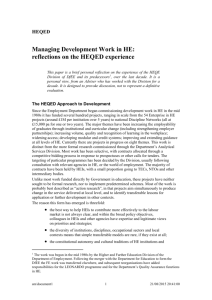Zimbabwe Council for Higher Education (ZIMCHE) FUNDING
advertisement
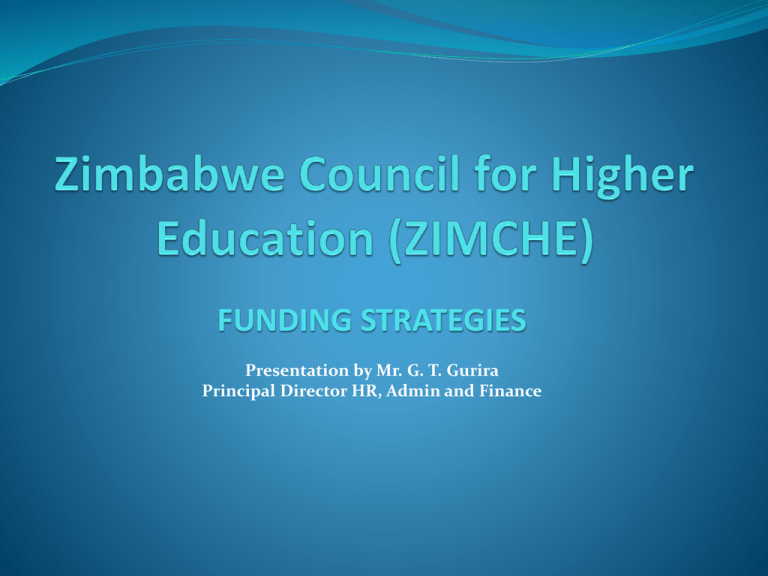
FUNDING STRATEGIES Presentation by Mr. G. T. Gurira Principal Director HR, Admin and Finance Role of Higher Education in National Development • The role of higher education in national development is uncontested • Higher education and its constituent institutions have an immense social and public responsibility • Higher education avails to society a critical mass of citizenry who possess the capability to engage the most intractable problems of society • It produces the skilled graduates, professionals and intellectuals with the stamina to drive economic, social and political development The Zimbabwe Higher Education Sector The Zimbabwe higher education sector has undergone massive expansion since 1980 From one public university at independence it now has 15 universities, nine (9) public and six (6) private The system is expected to grow even larger in 2012 with the addition of three new public universities and probably one private university i.e. the Reformed Church in Zimbabwe The current enrolment in our higher education system is in excess of 55000 FUNDING THE CHALLENGES The effects of massification i.e. increased numbers in higher education is a world wide phenomena from which Zimbabwe and other developing nations have not been spared Increased enrolments have a direct bearing on quality assurance The major challenge is how do you provide quality education in a context of increased numbers against a background of limited and dwindling funding Challenges (cont.) Currently the entirety of our public higher education institutions are heavily dependent on the fiscus for capital and recurrent expenditures On average it is estimated 80% of budgetary support is from the fiscus, 15% fees and 5% from other sources This is obviously unsustainable: there is need for HEIs to diversify funding sources especially in a context where the cake is getting smaller The crisis of our institutions is worsened/exacerbated by the formidable economic, social and political challenges encountered by our nation in the ten years following the onset of the land reform programme (2001 to 2010). Challenges cont.... When the macro economic environment took a nose dive, the institutions could not escape the irresistible vortex triggered by the land revolution. Resultant scenario: - massive brain drain - lack of infrastructural development (given that most of our institutions were born during this most challenging period in the history of our nation). -inability of higher education institutions to deliver on v their mandates. -low staff morale The three pillars of a successful higher education system Planning(ensuring all planning documents align with educational planning).i.e. Higher and Vocational education 2. Quality assurance (as discussed) 3. Funding - Percentage of national budget that goes to higher education -Institutional funding arrangements -Student educational support arrangements 1. FUNDING STRATEGIES Situation in institutions has slightly improved following the signing of the Global Political Agreement (GPA) Institutions are back to the normal semester system and enrolments have improved. The real challenge is to prepare our HEIs for global competitiveness Public HEIs and private HEIs are expected to be innovative in devising funding strategies if they are to survive Funding strategies (cont.) Suggested strategies: PPPs – where private player performs service delivery on administrative function and assumes associated risks in return for a predetermined fee PPPs described by the Honourable Minister S. Mudenge as one of the practical and viable strategies to mobilise resources for our HEIs Joint Ventures (JVs) with willing partners in academic related ventures e.g. Printing Press and Publishing House Commercial Agriculture – example of Chinhoyi University joint venture with Chinese firm. Short courses/ programmes Collaborative Research/Consultancies Centres of excellence Industrial doctorates and incubation centres Fundraising e.t.c e.t.c Thank you


